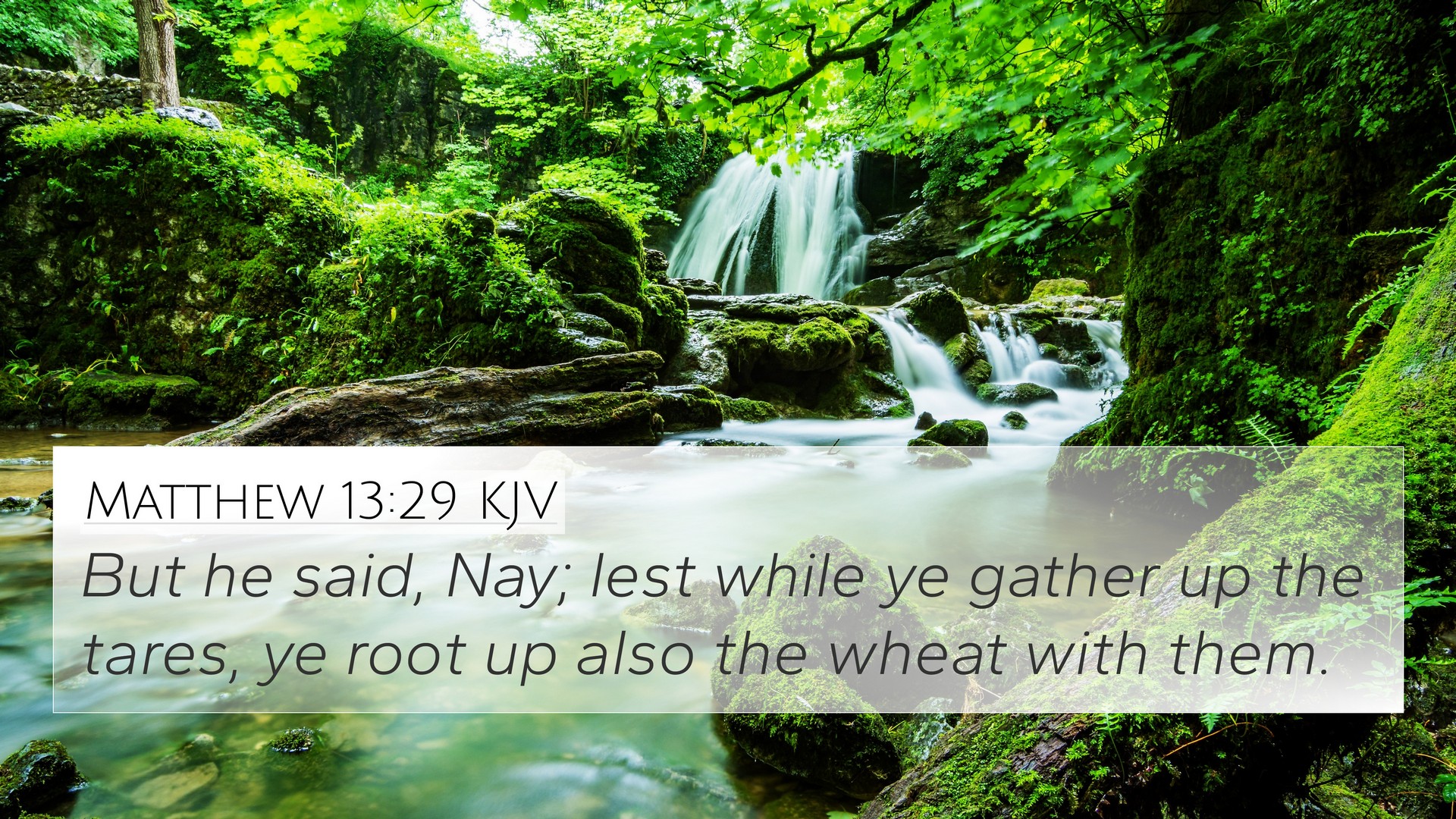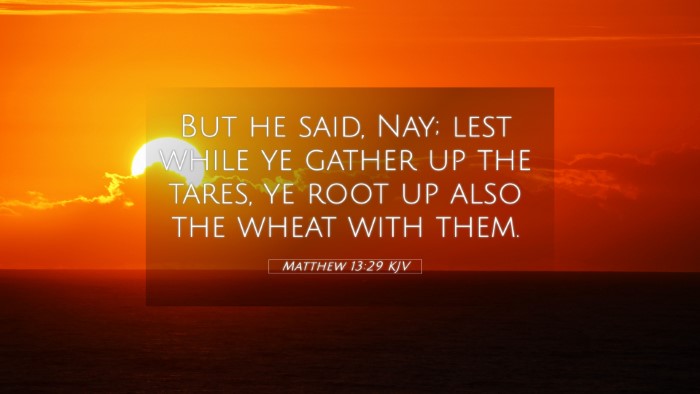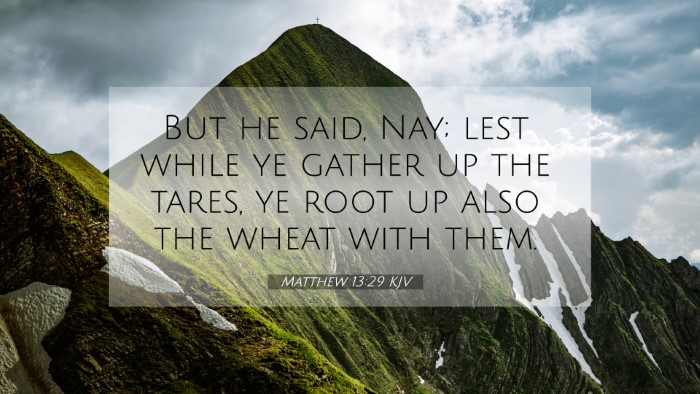Understanding Matthew 13:29
Verse: "But he said, Nay; lest while ye gather up the tares, ye root up also the wheat with them." (Matthew 13:29)
This verse comes from the Parable of the Weeds, where Jesus instructs his followers on the delicate process of judgment and the handling of good and evil within the kingdom of God. Below, we explore the interpretation and implications of this verse, synthesizing insights from public domain commentaries including those by Matthew Henry, Albert Barnes, and Adam Clarke.
Meaning and Interpretation
In this passage, Jesus illustrates the coexistence of good and evil in the world. The 'wheat' represents the righteous, while the 'tares' (weeds) signify the unrighteous. The master’s decision to let both grow until the harvest conveys important spiritual truths.
-
1. The Importance of Patience
Matthew Henry highlights that the delay in exterminating the tares illustrates God's patience and forbearance towards sinners. It teaches that we should not be quick to judge, as the final sorting will occur at God's appointed time.
-
2. The Complexity of Judgment
Albert Barnes notes that the intertwining of tares and wheat makes it difficult for humans to distinguish between the two. This calls for caution in our judgmental attitudes, reminding us that what appears evil may actually serve a purpose in the greater divine plan.
-
3. Divine Authority in Harvesting
Adam Clarke emphasizes that only the master has the authority to separate the wheat from the tares. Thus, humans are reminded of their limitation and the need to rely on God's discernment rather than their own.
-
4. The Ultimate Judgment Day
The verse signifies the imminent 'harvest' at the end of time, when God will judge humanity. This reinforces the importance of remaining faithful and hopeful amidst the challenges posed by the wickedness in the world.
-
5. Coexistence of Good and Evil
This principle is rooted in theology where duality is an integral part of God's creation, testing faith and commitment among believers as they navigate through a world fraught with moral dilemmas.
Cross References
Matthew 13:29 relates to several other Bible verses enhancing the thematic understanding of good and evil coexisting:
- Matthew 13:30 - The final sorting of wheat and tares at harvest time.
- Galatians 6:7 - “For whatever a man sows, that he will also reap.”
- Romans 2:6 - “Who will repay each person according to what they have done.”
- Revelation 14:15 - The harvest of the earth has come, symbolizing God's judgment.
- 1 Peter 5:8 - “Be sober-minded; be watchful. Your adversary the devil prowls around like a roaring lion, seeking someone to devour.”
- 2 Corinthians 11:14 - Warning that Satan disguises himself as an angel of light, illustrating the deceptive nature of evil.
- Matthew 25:32 - The separation of the sheep from the goats at the final judgment.
Conclusion
Matthew 13:29 invites deep reflection on how we view ourselves in the tapestry of good and evil in the world. The teachings stress the importance of mercy, patience, and the acknowledgment that the final judgment is God's domain, while also encouraging believers to maintain their integrity and faith amidst challenges.
Further Study Suggestions
As you seek to explore these themes further, consider using various Bible reference resources and tools for Bible cross-referencing. The Bible concordance will help you locate connected passages, while a cross-reference guide can deepen your understanding of the continuity within Scripture.
Utilizing cross-referencing Bible study methods, one can engage with the Word more interactively, leading to richer insights into how these scriptures relate to both Old and New Testament contexts, and to present-day life.
By engaging deeply with Matthew 13:29 and its connections, believers can gain a clearer understanding of the complexity of God's creation and His ultimate plan for humanity.


